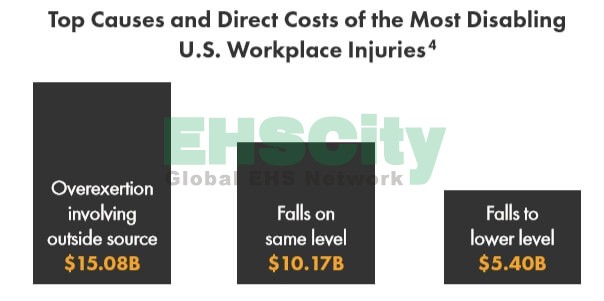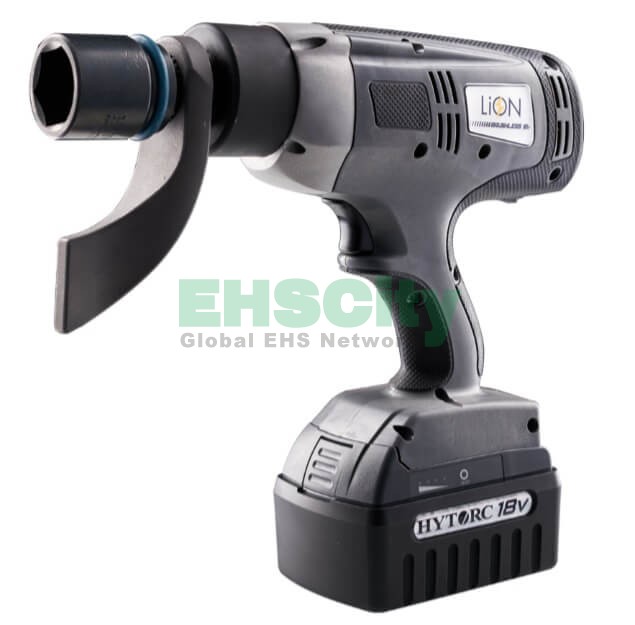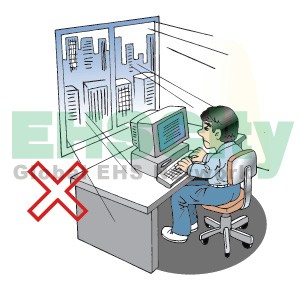Having the right tool for every job is part of the fun in fixing and maintaining equipment for a living. But what if the tools wind techs typically use are more harmful than helpful? For instance, breaker bars and slugging wrenches are time-consuming and can lead to debilitating injuries. Impact guns generate tremendous vibration and noise and are banned at many jobsites. Manufacturing and repair shops may be full of potential hazards such as fumes, electrical malfunctions, and sharp or heavy parts. The tools used there should help manufacturers and wind technicians, not hinder performance.
Also consider too that messy long cords and air-supply hoses can get in the way or make a worker trip and fall. Repeated use of heavy and unwieldy clicker wrenches and impact guns can do significant damage to hands, wrists, and elbows. The resulting sprains, strains, and overexertion that result may lead to serious—and even fatal—accidents, or cause debilitating chronic conditions, known as work-related musculoskeletal disorders or WMSDs.
There is a lot of pride in being a wind technician. You keep complex machines working properly. They have many of the same challenges as auto mechanics. For example, according to a report by the U.S. Bureau of Labor and Statistics, “mechanics are more likely than the average worker to be injured or killed on the job, as evidenced by higher rates of fatalities and injuries and illnesses.” The report presents chilling statistics. Wind techs also work in hazardous environments and may face similar risks.
The reports add: “the median number of days away from work for injured or ill mechanics in 2005 was five days,” which is “less than the median of seven days for all occupations.” It’s good to be a hard worker, but does the work itself need to be this hard or this dangerous?
Cost of injuries
According to the 2016 Liberty Mutual Workplace Safety Index, “U.S. businesses spend more than a billion dollars a week on the most disabling, nonfatal workplace injuries.” Overexertion and falls at the same level are the leading causes of this staggering financial burden.
Better tools for a better workplace
WMSDs can be prevented or minimized by providing workers with tools designed for optimal performance, safety, and user comfort. Ergonomic tools may help reduce worker fatigue and injuries while increasing overall workplace efficiency.
According to the National Institute for Occupational Safety and Health, the goal of ergonomics is “to reduce stress and eliminate injuries and disorders associated with the overuse of muscles, bad posture, and repeated tasks. This is accomplished by designing tasks, work spaces, controls, displays, tools, lighting, and equipment to fit the employee’s physical capabilities and limitations.”
In addition, reducing the weight of heavy power tools or combining features of several tools into one (to avoid downtime from having to switch from one to the other), may increase worker safety and efficiency.

Recent battery-powered wrenches provide solutions to the trip hazards and vibrations of conventional power tools. For example, the LION-.25 from HYTORC is affordable, accurate, and delivers repeatable results. The lightweight, cordless torque gun is made for smaller bolting applications. At seven pounds (with battery), the tool weighs less than a typical impact gun or a manual clicker wrench.
However, it’s important to use caution when choosing tools because claims can be misleading. A manufacturer may use the term “ergonomic” or “ergonomically designed” without fully vetting the claim. So before selecting a tool, do a thorough evaluation of the expected tasks and work environment. What may work well for some workers, may be less than ideal for you. Following basic guidelines will help you make a more informed decision.
EHS Today Top Ten
When selecting power tools, EHS Today, a workplace safety publication, recommends paying special attention to vibration and contact stress that can result from using the tool. It also offers guidelines to help you be smart about using these tools.
- Use the right tool for the job, and the right tool for the user.
- “Bend” the tool, not the wrist. Use tools with angled or “bent” handles when appropriate.
- Avoid high-contact forces and static loading.
- Reduce excessive gripping force or pressure.
- Avoid extreme and awkward joint positions.
- Avoid twisting hand and wrist motion by using power tools rather than hand tools.
- Avoid repetitive finger movements, or reduce the number of repetition if possible.
- Minimize the amount of force needed to activate trigger devices on power tools.
- Avoid thumb triggers.
- Use two or three-finger triggers for power tools. Use four-finger triggers only when the tool is balanced.
For further reading
Occupational Injuries, Illnesses, and Fatalities to Automotive Service Technicians and Mechanics, 2003 to 2005 – U.S. Bureau of Labor Statistics
https://www.bls.gov/opub/mlr/cwc/occupational-injuries-illnesses-and-fatalities-to-automotive-service-technicians-and-mechanics-2003-to-2005.pdf
The table comes from the 2016 Liberty Mutual Workplace Safety Index https://www.cdc.gov/niosh/topics/ergonomics/
Ergonomics and Musculoskeletal Disorders – The National Institute for Occupational Safety and Health (NIOSH)
https://www.libertymutualgroup.com/about-liberty-mutual-site/research-institute-site/documents/2016%20WSI.pdf
Ergonomic Guidelines for Selecting Hand and Power Tools http://ehstoday.com/health/ergonomics/ehs_imp_37964


